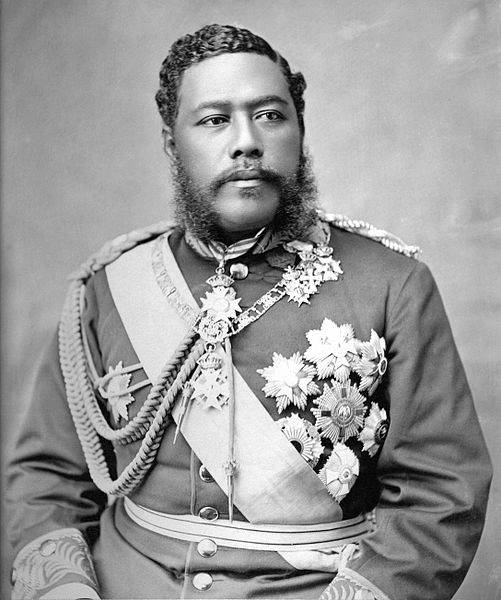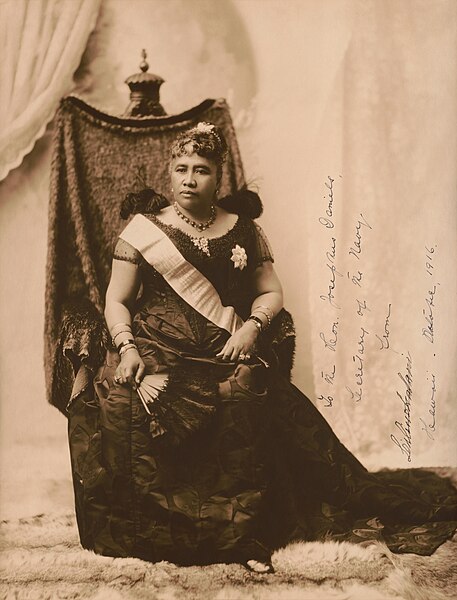The House of Kalākaua, or Kalākaua Dynasty, also known as the Keawe-a-Heulu line, was the reigning family of the Kingdom of Hawaiʻi under King Kalākaua and Queen Liliʻuokalani. They assumed power after the last king of the House of Kamehameha, Lunalilo, died without designating an heir, leading to the election of Kalākaua and provoking the Honolulu Courthouse riot. The dynasty lost power with the overthrow of Liliʻuokalani and the end of the Kingdom in 1893. Liliʻuokalani died in 1917, leaving only cousins as heirs.
Collage showing King Kalākaua and family. Left to right from top: Queen Kapiʻolani, King Kalākaua, Princess Likelike, Queen Liliʻuokalani, Princess Kaʻiulani, and Prince Leleiohoku.
The Hawaiian Kingdom, also known as Kingdom of Hawaiʻi, was a sovereign state ruled by unelected dynastic families located in the Hawaiian Islands which existed from 1795 to 1893. It was established during the late 18th century when Hawaiian chief Kamehameha I, from the island of Hawaiʻi, conquered the islands of Oʻahu, Maui, Molokaʻi, and Lānaʻi, and unified them under one government. In 1810, the Hawaiian Islands were fully unified when the islands of Kauaʻi and Niʻihau voluntarily joined the Hawaiian Kingdom. Two major dynastic families ruled the kingdom, the House of Kamehameha and the House of Kalākaua.
Hawaiian military officer, 1819 (by Jacques Arago)
King Kalākaua meeting U.S. President Grant at the White House, 1874
King Kalākaua
Liliʻuokalani





